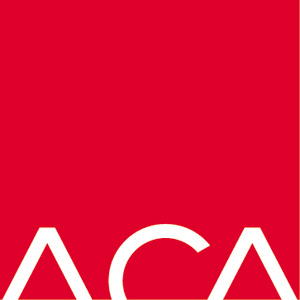ACA Pulse Check 2025 – SA Insights
The South Australian respondents of the ACA Pulse Check highlight COVID-era adaptation, with more purposeful hiring, better office systems, and proactive steps to reshape services and structures. However, widespread challenges remain – from shrinking pipelines to fee pressure and staffing gaps. A key concern is the growing disconnect between client expectations and project realities – leaving architects to shoulder greater risk for diminishing returns.
THE NUMBERS
The South Australian Pulse Check features insights from 28 practices. With nearly two-thirds (65%) in operation for over 20 years, the responses represent a highly experienced cohort. Most practices remain small in scale, with 1–5 staff now the most common size. Staffing dynamics are in flux, with 63% hiring staff in the past year, focusing on students and mid-career professionals. At the same time, more than 40% faced recruitment challenges. A third of practices let staff go, often due to diminishing workloads or business model shifts.
WHAT REALLY STOOD OUT FOR US …
In South Australia, the 2025 ACA Pulse Check indicates a profession at a crossroads. While many practices have built adaptive cultures around wellbeing and flexibility, widespread challenges remain – from shrinking pipelines to fee pressure and staffing gaps. Many SA practices are reevaluating how they operate, with some proactively reshaping their services and structure. What stands out is a mismatch – client expectations and project realities aren’t aligning, forcing architects to carry more risk for less return.
FIVE KEY TAKEAWAYS FROM SOUTH AUSTRALIA
1. Work pipelines are shrinking
Nearly half (44%) of SA respondents said they urgently need more work. While some have a steady flow of projects, others report stalled projects and shrinking pipelines.
“We’re doing a lot of feasibility studies – very few turn into funded projects.”
2. Revenue is declining for many
60% of practices experienced falling revenue in the past six months, with more than a third seeing a moderate to significant drop. Rising costs, fee competition and project cancellations are squeezing profitability.
“It’s not just fewer jobs – it’s also smaller fees and more red tape.”
3. Staffing pressures persist
While 63% hired new staff, nearly half reported difficulties finding qualified candidates, especially at the mid-career level. A third had to let staff go, and 41% say they may need to soon.
“Finding mid-tier architects is nearly impossible.”
4. Wellbeing support is high – but so is burnout
South Australian practices are leaders in providing structured wellbeing support, from check-ins to shared activities. However, directors report rising stress levels. Hybrid management remains challenging.
“There’s a gap between wellbeing policies and lived experience – especially for leadership.”
5. Flexible work is the norm
93% offer some form of flexible work, with nine-day fortnights and hybrid schedules common. But there’s friction. Some directors feel WFH benefits are one-sided and affect collaboration and accountability.
FURTHER INSIGHTS
What did the SA Pulse Check reveal about staffing?
- 63% of practices hired staff in the past year
- 41% either let staff go or may need to soon
- 59% reported difficulty in recruitment, especially for mid-level and experienced practitioners
- Staff challenges included exhaustion, mentoring gaps, and difficulty managing hybrid teams.
What’s happening with revenue?
- 60% of practices saw revenue decline (with more than a third seeing a moderate to significant drop)
- The main factors for the drop in revenue include: fewer projects; cancellations or delays; fee underbidding and client budget cuts; escalating business costs (e.g. insurance, staff, software); and slow-paying clients (note that government and commercial clients were cited as the slowest payers).
“We’re chasing months of overdue invoices – especially from public sector clients.”
What positive developments are we seeing?
- 93% offer flexible working (WFH, flexible hours, nine-day fortnights)
- Wellbeing efforts include: scheduled and informal check-ins, shared activities and wellbeing champions, and strong use of ACA EAP and mental health resources
- COVID-era adaptation has led to more purposeful hiring, better office systems, and greater awareness of wellbeing and workplace culture.
What challenges are most pressing?
- A tightening pipeline and future work uncertainty
- Fee pressure and rising business costs
- Delayed payments and long approval processes
- Staffing challenges, especially recruitment and mentoring
- Managing distributed teams and maintaining collaboration
What ACA resources were most valued?
South Australian members highlighted the ACA’s:
- EAP Program – critical for small teams without internal HR or existing Employee Assistance Programs
- Templates and tools – especially for contracts and business systems
- Events and webinars – with strong support for those covering legal and practice management
- Advocacy and fee guidance
“ACA is one of the few voices advocating for fairer fees and procurement – keep it up.”
How the ACA will use these insights
SA results will shape ACA’s advocacy and resource development, including:
- Fair procurement and fee advocacy tailored to regional markets
- Templates for risk mitigation and contract admin
- Wellbeing and leadership resources
- More targeted content for emerging practices, sole practitioners, and small studios
- Continued pressure on payment standards and government procurement reform.
Photo: James R, Unsplash
